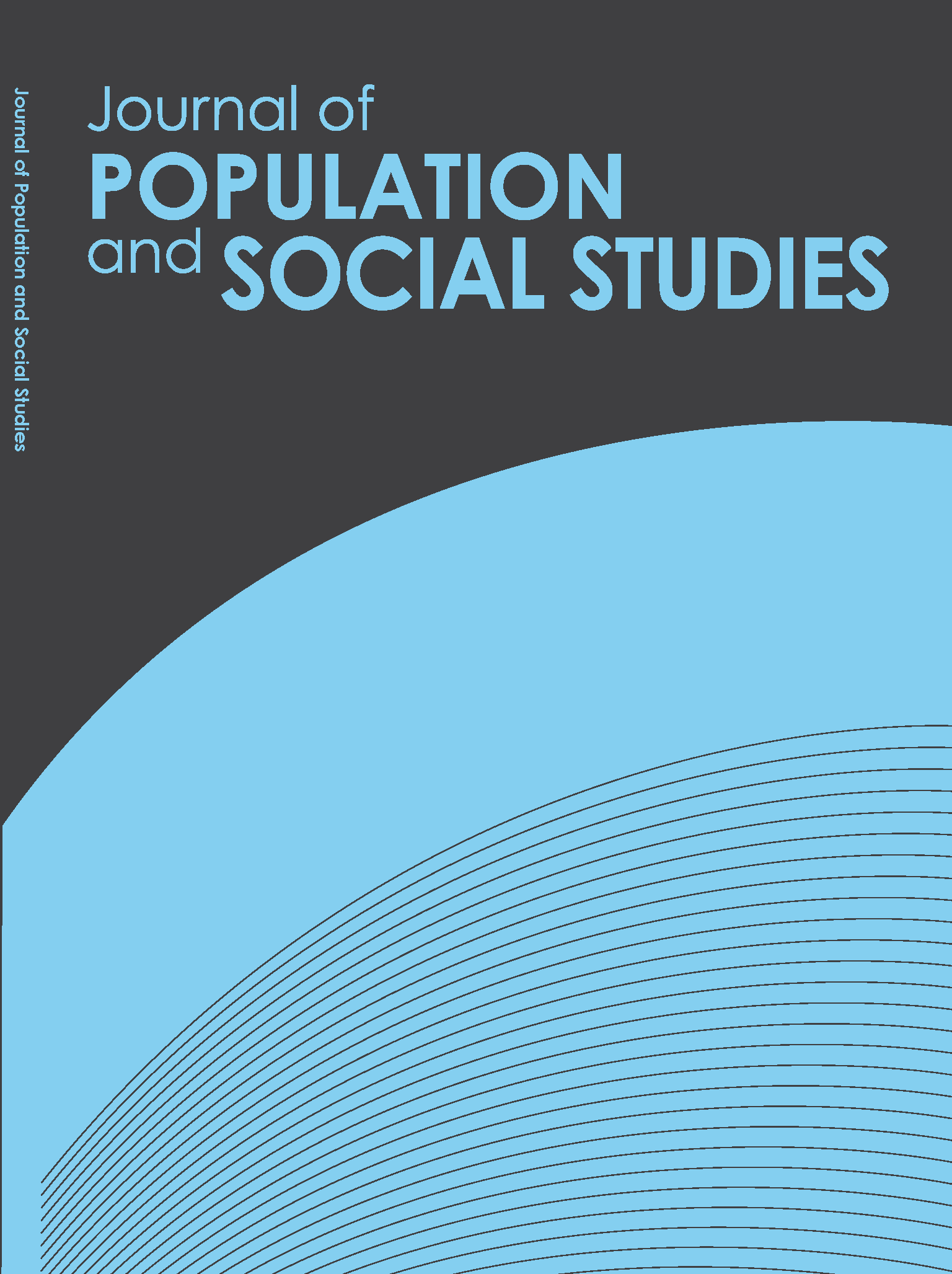Segmented Assimilation: A Comparison of the Factors Related to the Adjustment of Domestic and International Muslim Migrants to Bangkok
Main Article Content
Abstract
This paper uses segmented migration theory to consider differences in demographic characteristics, adjustment and concerns between domestic and international Muslim migrants to Bangkok. Face-to-face individual interviews were conducted with 183 international and 104 domestic male and female migrants. Both the domestic and international migrants adjusted reasonably well to life in Bangkok. Most were employed at the time of the survey and were at least moderately satisfied with their lives in Bangkok. The domestic male migrants were on average younger than the international migrants and most had migrated to Bangkok when they were young adults. Many of the migrants had university education (52% male domestic, 60% female domestic, 40% male international, and 29% female international). The migrants also reported concerns about their future lives and difficulty with language. The Islamic faith and Islamic education were important factors in the adjustment of the migrants to Bangkok.
Article Details
References
Aale, P. K. (2010, May 29) Europeiskenmuslimer dropper moskeen [European Muslims drop the mosque]. Aftenposten. Retrieved from http://www. aftenposten. no/nyheter/uriks/Europeiske-muslimer-dropper-moskeen-5329122. html
Ballard, R. (1989). Overseas migration and its consequences: The case of Pakistan. In H. Alavi and J. Hariss (Eds. ). The sociology of developing societies (pp. 112-120). London: Macmillan.
Banchevska, R. (1981). Uprooting and settling: The transplanted family. In L. Eitinger & D. Schwartz. Strangers in the world (pp. 107-132). Bern: Hans Huber.
Bouma, G. D. , Daw, J. & Munawar, R. (2001). Muslims managing religious diversity. In A. Saeed and S. Akbarzadeh (Eds. ). Muslim communities in Australia (pp. 53-96). Sydney: University of New South Wales Press.
Bulut, E. & Ebaugh, H. R. (2013). Religion and assimilation among Turkish Muslim immigrants: Comparing practicing and non-practicing Muslims. International Migration and Integration, 5, 487-507. doi: http://dx. doi. org/10. 1007/s12134-013-0301-9
Ford, K. , Chamratrithirong, A. , Apipornchaisakul, K. , Panichapak, P. & Pinyosinwat, T. (2014). Social integration, AIDS knowledge and factors related to HIV prevention among migrant workers in Thailand. AIDS and Behavior, 18, 390-397. doi: http://dx. doi. org/10. 1007/s10461-013-0410-7
Fullerton, A. S. (2009). A conceptual framework for ordered logistic regression models. Sociological Methods & Research, 38 (2), 306-347. doi: http://dx. doi. org/10. 1177/0049124109346162
Gardiner, K. (1995). Global migrants, local lives: Travel and transformation in rural Bangladesh. Oxford: Clarendon Press.


